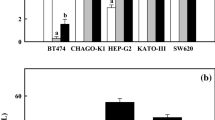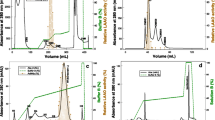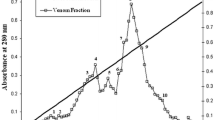Abstract
Toxins, enzymes, and biologically active peptides are the main components of snake venoms from the genusBothrops. Following the venom inoculation, the local effects are hemorrhage, edema, and myonecrosis.
Nineteen different species of BrazilianBothrops were screened for protein content andl-amino acid oxidase activity.B. cotiara, formerly found in the South of Brazil, is now threatened with extinction. Its venom contains a highly hemorrhagic fraction and, as expected from the deep yellow color of the corresponding lyophilized powder, a highl-amino acid oxidase (LAO) activity was also characterized. Flavin adenine dinucleotide (FAD) is its associate coenzyme.B. cotiara venom LAO catalyzed the oxidative deamination of severall-amino acids, and the best substrates were methionine, leucine, tryptophan, and phenylalanine, hence, its potential application for the use in biosensors for aspartame determination and for the removal of amino acids from plasma. High levels for LAO were also found in other species thanB. cotiara. In addition, the technique of isoelectric focusing (IEF) was employed as a powerful tool to study the iso-or multienzyme distribution for LAO activity in theB. cotiara snake venom.
Similar content being viewed by others
References
Kamiguti, A. S., and Cardoso, J. L. C. (1989),Toxicon 27(9), 955–963.
Gutierrez, J. M., and Lomonte, B. (1989),Mem. Inst. Butantan 51(4), 211–223.
Leite, L. C. C., Furtado, M. F. D., Correa, T. C., and Raw, I. (1992),Comp. Biochem. Physiol. 102B(3), 515–520.
Lomonte, B., and Gutierrez, J. M. (1983),Rev. Biol. Trop.,31(1), 37–40.
Reichl, A. P., Serrano, S. M. T., Assakura, M. T., and Mandelbaum, F. R. (1989),Mem. Inst. Butantan 51(4), 225–237.
Bultron, E., Thelestam, M., and Gutierrez, J. M. (1993),Biochim. Biophys. Acta 1179, 253–259.
Tanaka, N., Nakada, H., Itoh, N., Mizuno, Y., Takanishi, M., Kawasaki, T., Tate, S., Inagaki, F., and Yamashina, I. (1992),J. Biochem. 112, 68–74.
Wellner, D., and Meister, A. (1960),J. Biol. Chem. 235(7), 2013–2018.
Stiles, B. G., Sexton, F. W., and Weinstein, S. A. (1991),Toxicon 29(9), 1129–1141.
Hermes-Lima, M. (1990),Ciëncia Hoje 13(75), 16, 199.
Bechara, E. J. H. (1993), personal communication.
Male, K. B., Luong, J. H. T., Gibbs, B., and Konishi, Y. (1993),Appl. Biochem. Biotechnol. 38(3), 189–201.
Bradford, M. M. (1976),Anal. Biochem. 72, 248–254.
Aisaka, K., and Terado, O. (1981),Agric. Biol. Chem. 45(10), 2311–2316.
Dawson, R. M. C., Elliott, D. C., Elliott, W. H., and Jones, K. M. (eds.) (1991), inData for Biochemical Research, Clarendon Press, oxford, pp. 124–125.
Huggett, A. S. G., and Nixon, D. A. (1957),J. Biochem. 66, 12.
Kondo, H., Kondo, S., Ikezawa, H., and Murata, R. (1960),Jpn. J. M. Sci. Biol. 13, 43–51.
Jared, C., and Furtado, M. F. D. (1988),Ciëna Hoje 7(42), 27–32.
Lomonte, B., Tarkowski, A., and Hanson, L. A. (1993),Inflammation 17(2), 93–105.
Tan, N., and Ponnudurai, G. (1992),Comp. Biochem. Physiol. 1003C(2), 299–302.
Whelan, W. (ed.) (1974),The Enzyme Commission, Academic, pp. 176–177.
Furtado, M. F. D., Colletto, G. M. D. D., and Silva, W. D. (1991),Mem. Inst. Butantan 53(2), 149–159.
Curti, B., Massey, V., and Zmudka, M. (1968),J. Biol. Chem. 243(9), 2306–2314.
Friedrich, C., and Tu, A. T. (1971),Biochem. Pharmacol. 20, 1549–1556.
Radu, G. L., and Coulet, P. R. (1993),Analusis 21, 101–105.
Author information
Authors and Affiliations
Additional information
An erratum to this article is available at http://dx.doi.org/10.1007/BF02786867.
Rights and permissions
About this article
Cite this article
Pessatti, M.L., Fontana, J.D., Furtado, M.F.D. et al. Screening ofBothrops snake venoms forl-amino acid oxidase activity. Appl Biochem Biotechnol 51, 197–210 (1995). https://doi.org/10.1007/BF02933424
Issue Date:
DOI: https://doi.org/10.1007/BF02933424




